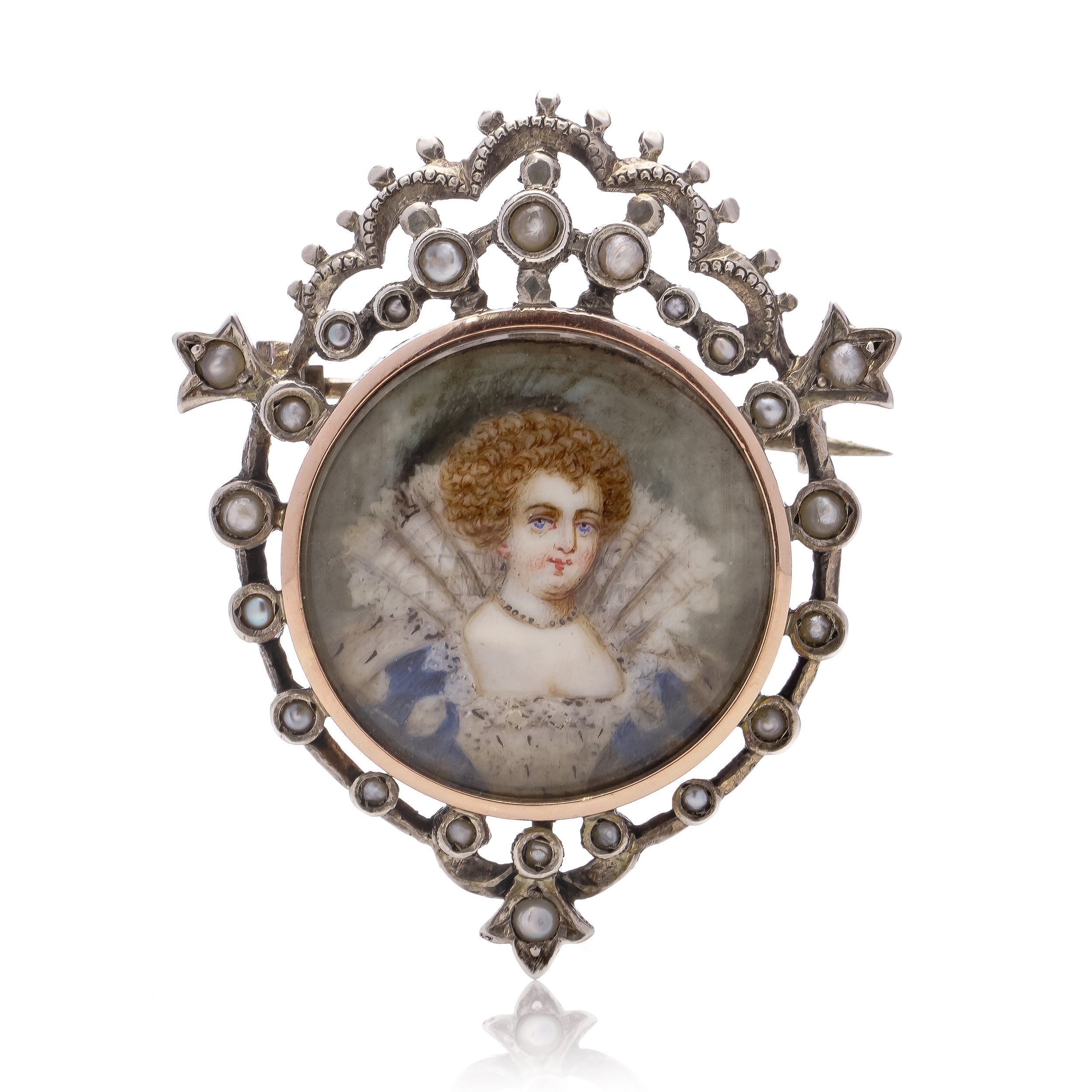How to evaluate and appraise Antique Jewellery
Antique jewellery possesses an allure that transcends time, a testament to exquisite craftsmanship and historical significance. Whether you're a seasoned collector or a novice enthusiast, understanding the intricate art of valuating and appraising antique jewellery is essential. In this comprehensive guide, we delve into the nuances of antique jewellery appraisal, offering valuable insights and expert tips that can transform you into a connoisseur. So, let's embark on this fascinating journey and unravel the secrets of these timeless treasures.
1. Understanding the Significance of Antique Jewellery
17th Century Royalist hand-painted watercolour miniature of Anne of Denmark, image courtesy of Mozeris Fine Antiques
Antique jewellery holds a unique charm, often reflecting the fashion, culture, and craftsmanship of a specific era. Valuating antique jewellery starts with understanding its historical context. Each piece tells a story, making it essential to research the period it belongs to and the techniques prevalent during that time.
2. Recognizing Different Styles and Periods
Art Deco platinum bangle, image courtesy of Mozeris Fine Antiques
Antique jewellery spans various styles and periods, such as Victorian, Edwardian, Art Nouveau, and Art Deco. Familiarize yourself with the characteristics of each period, including the popular gemstones, metals, and design elements. This knowledge is invaluable when assessing the authenticity and value of a piece.
3. Evaluating the Craftsmanship
Appraising antique jewellery involves a meticulous examination of its craftsmanship. Look for intricate detailing, precision in gemstone settings, and the overall condition of the piece. Fine craftsmanship often indicates the work of skilled artisans, enhancing the piece's value significantly.
4. Assessing the Quality of Gemstones
Aquamarine ring, image courtesy of Mozeris Fine Antiques
Gemstones play a pivotal role in antique jewellery. Whether it's the vibrant hues of rubies, sapphires, or emeralds, each gemstone has unique qualities that determine its value. Evaluate factors like colour, clarity, cut, and carat weight to ascertain the gemstone's quality and rarity.
5. Considering the Historical Provenance
The historical provenance of antique jewellery can greatly influence its value. Pieces with documented histories, such as those owned by famous personalities or associated with significant events, often command higher prices at auctions. Researching the provenance adds a layer of authenticity to the valuation process.
6. Examining Hallmarks and Maker's Marks
18kt.gold ring with English hallmarks
Hallmarks and maker's marks are vital clues when valuing antique jewellery. These marks provide information about the piece's origin, date of creation, and the maker's identity. Thorough research and understanding of these marks can unveil crucial details that impact the overall appraisal.
Image courtesy of The National Association of Jewellers
7. Consulting Experts and Appraisers
When in doubt, seek the expertise of professional appraisers. Their years of experience and extensive knowledge can provide accurate valuations. Moreover, they can offer valuable insights into the historical context of the piece, enriching your understanding of antique jewellery.
8. Preservation and Care of Antique Jewellery
Preserving the beauty and integrity of antique jewellery is essential. Proper storage, cleaning, and maintenance are key factors in maintaining its value. Learn about appropriate cleaning methods and storage techniques to ensure your precious pieces remain in excellent condition.
9. Navigating the Antique Jewellery Market
Understanding market trends and demand patterns is crucial for both buyers and sellers. Stay informed about auctions, exhibitions, and reputable dealers in the antique jewellery market. This knowledge equips you to make informed decisions and secure the best deals.
10. Appreciating the Artistry and History
In the realm of antique jewellery, appreciation goes beyond monetary value. Each piece embodies the artistry and history of its time, making it a tangible link to the past. Cultivate a genuine passion for these treasures, appreciating them not just as investments but as embodiments of human creativity and craftsmanship.







